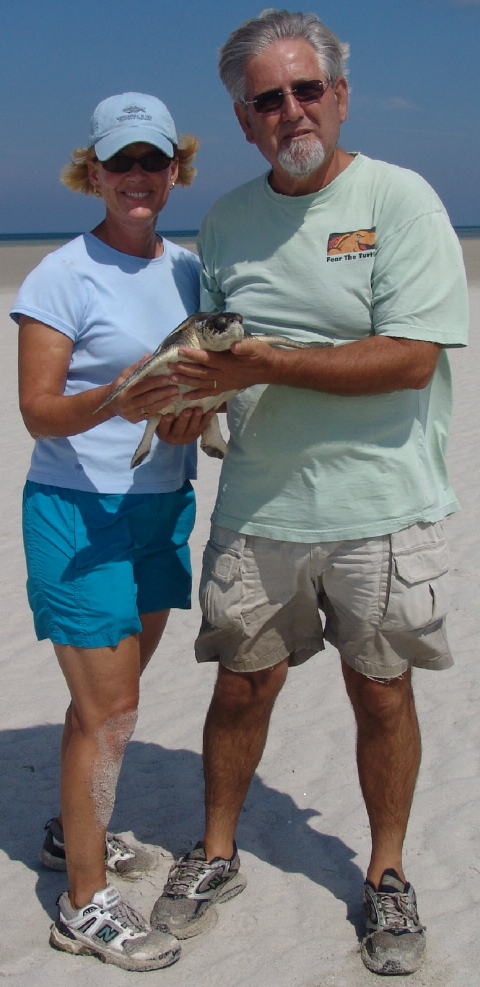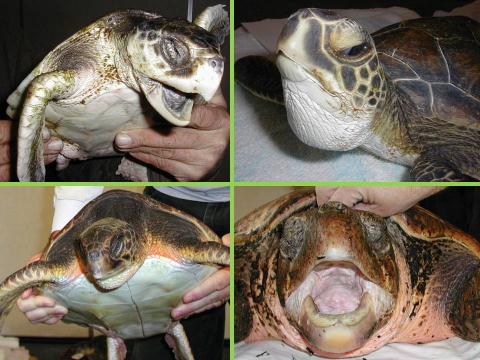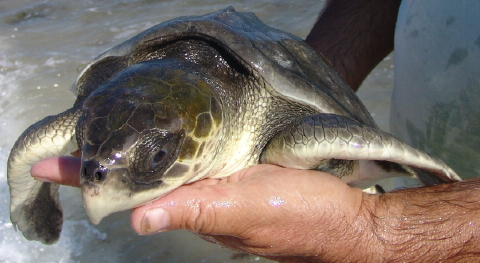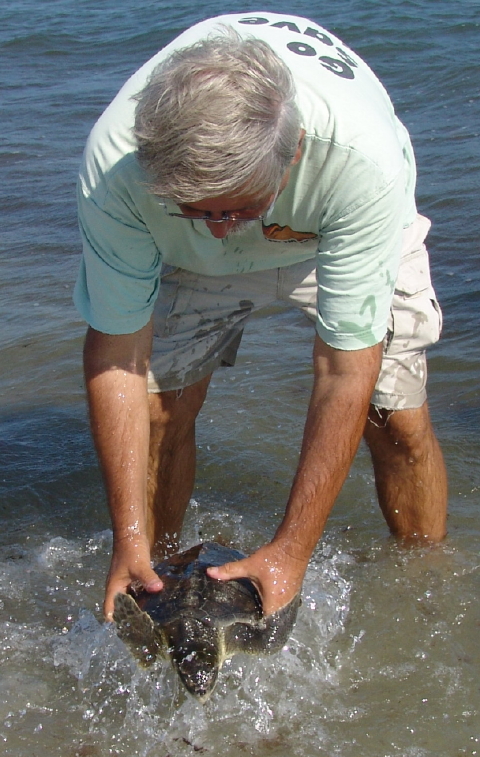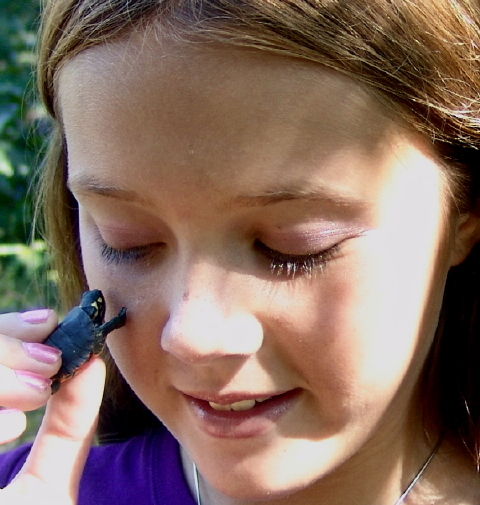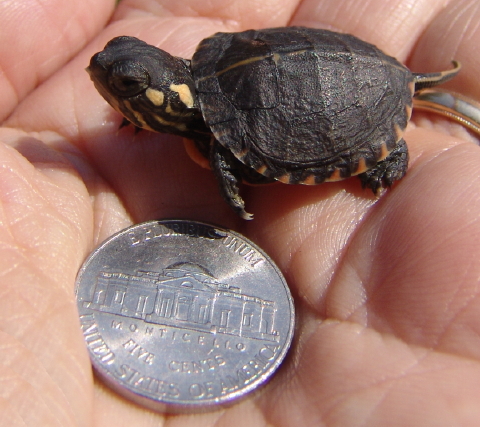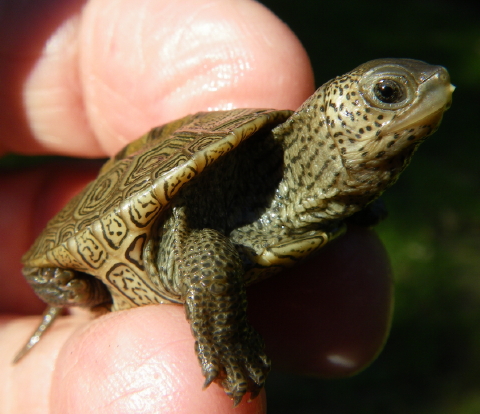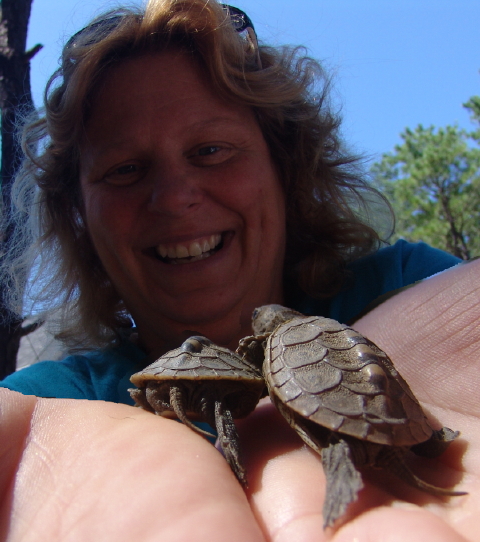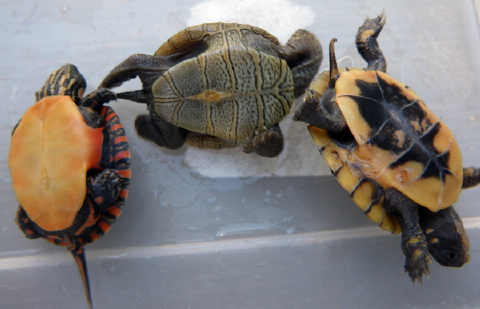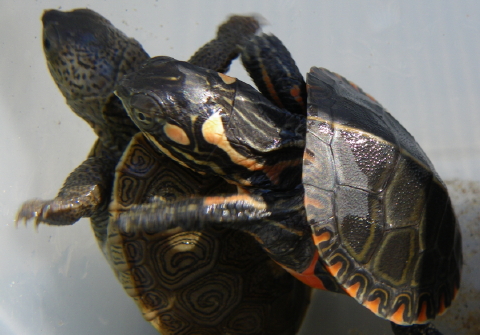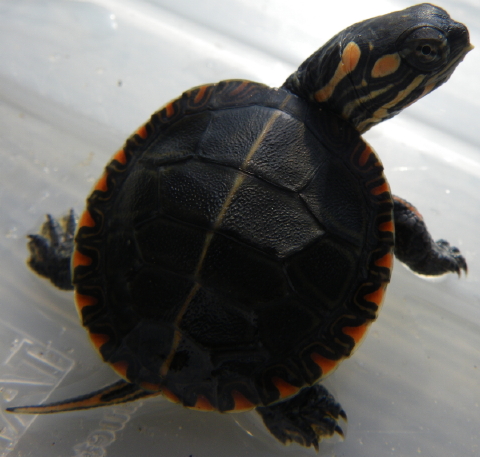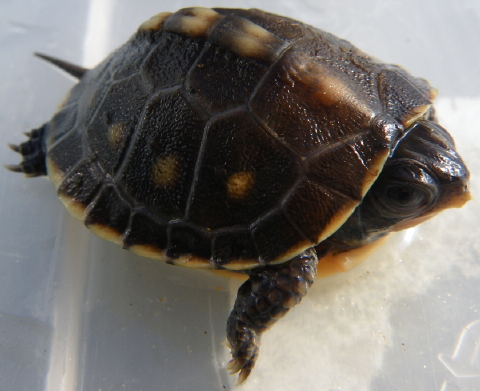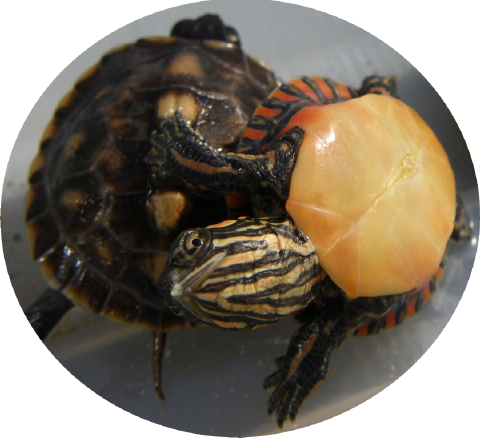Sue Wieber Nourse, Don Lewis & Juvenile Kemp’s Ridley
As long shadows form and days begin to shorten, Turtle Journal’s thoughts and plans turn to sea turtle rescue season. Endangered juvenile sea turtles become trapped in the great seine net called Cape Cod Bay that stretches forty miles into the North Atlantic and “catches” turtles as they migrate south with dropping sea temperature. The warmer the summer season, the higher the probability that increased numbers of sea turtles will get trapped in the bay and become cold-stunned in November.Â
Rescued Cold-Stunned Sea Turtles (clockwise):
Kemp’s Ridley (top left), Green, Loggerhead, Hybrid
Over the last few decades more than a thousand of the most endangered sea turtles in the world have been recovered off Cape Cod beaches by volunteers organized by Mass Audubon’s Wellfleet Bay Wildlife Sanctuary (see Gearing Up for Sea Turtle Stranding Season on Cape Cod). The overwhelming majority (more than 90% in recent years) have been juvenile (1.5 to 3 year old) Kemp’s ridley sea turtles. Other rescued sea turtles include loggerheads, greens, hybrids and rarely hawksbills.
Rescued Kemp’s Ridley at Chapin Beach, Cape Cod
This youngster pictured above was rescued by Turtle Journal early in the 2008 stranding season at Chapin Beach in Dennis (see Saving a Critically Endangered Sea Turtle). Because it preceded the actual cold-stunning event by nearly two months, and was still quite lively, we decided to release it directly into Nantucket Sound so that it could continue its journey southward uninterrupted by a trip to the rehabilitation wards.
Rescued Kemp’s Ridley Released off Osterville, Cape Cod
At Dowses Beach in Osterville we released the young Kemp’s ridley and watched as it quickly swam off into the depths of Nantucket Sound.
First Observed Nesting Kemp’s Ridley
Blind Pass Beach, Manasota Key, Florida
Mature Female Kemp’s Ridley Nesting
On May 26th, 2010 Jessie Couto of the Coastal Wildlife Club filmed a female Kemp’s ridley sea turtle nesting at Blind Pass Beach on Manasota Key off the Gulf of Mexico.  This all volunteer club is licensed by the Florida Fish and Wildlife Conservation Commission to survey beaches in Sarasota, Charlotte and Lee counties, protecting endangered sea turtle nests. This female Kemp’s ridley, though, proved unique; she laid the first observed nest of this most endangered species of sea turtle on Manasota Key, perhaps colonizing a new nesting site for Kemp’s ridley along the Gulf Coast of Florida.
Blind Pass Beach, Manasota Key, Florida
The Coastal Wildlife Club generously shared these video clips with Turtle Journal, so that we can see what the potential impact of our rescue operations here on Cape Cod may have on the full life cycle of Kemp’s ridley turtles. Perhaps from the more than one thousand Kemp’s ridleys that we have recovered cold-stunned and helpless from Cape Cod Bay and returned back into the wild, perhaps one of these rescued females has colonized new Gulf of Mexico beaches like this pioneering female.
Kemp’s Ridley Finishes First Observed Nest on Manasota Key
As we watched the video of this female Kemp’s ridley completing her nest on Blind Pass Beach, we couldn’t help drawing the comparison with the “footwork” of our local diamondback terrapins that seem to have mastered the same rear limb steps in the dance for turtle survival.
Kemp’s Ridley Female Returns to Gulf of Mexico
As the camera records her return to the Gulf of Mexico after successfully completing her nest, we can imagine the full cycle of Kemp’s ridley conservation. Some of our colleagues in Rancho Nuevo, Mexico, Padre Island, Texas, and now Manasota Key, Florida observe nesting and protect eggs through incubation and hatchling release into the sea.  We take on the role of patrolling frigid, storm-tossed beaches of Cape Cod each November and December rescuing young juveniles trapped by the cold and near death from hypothermia. Our friends at the New England Aquarium provide emergency medical care to these weakened sea turtles and, with our other partners throughout the Northeast, provide long-term rehabilitation. Finally, we get to return these rescued turtles back into the wild to restore a critically endangered population (see World’s Most Endangered Sea Turtle, Rescued in Winter by Turtle Journal, Released in Summer). Whether any single turtle matches all aspects of this continuous story of rescue and conservation matters less than the big picture story itself: conservationists throughout North America banding together as partners to save the future of sea turtles on this ocean planet.
If you’d like to help save endangered sea turtles from certain death during the fiercest weather conditions of November and December in the Great White North of Cape Cod, let us know at Turtle Journal (turtlejournal@gmail.com) by email or through our hotline (508-274-5108) or get in touch with volunteer coordinator Cynthia Franklin (cfranklin@massaudubon.org) at Wellfleet Bay Wildlife Sanctuary at 508-349-2615. For those less agile and adventurous to challenge dangerous storm-tossed beaches in the dead of night, there are many ways to help this rescue program from offering clean towels to driving rescued animals from triage in Wellfleet Bay to treatment at the New England Aquarium. Thank you in advance for saving some of the world’s most endangered, yet charismatic, creatures.
